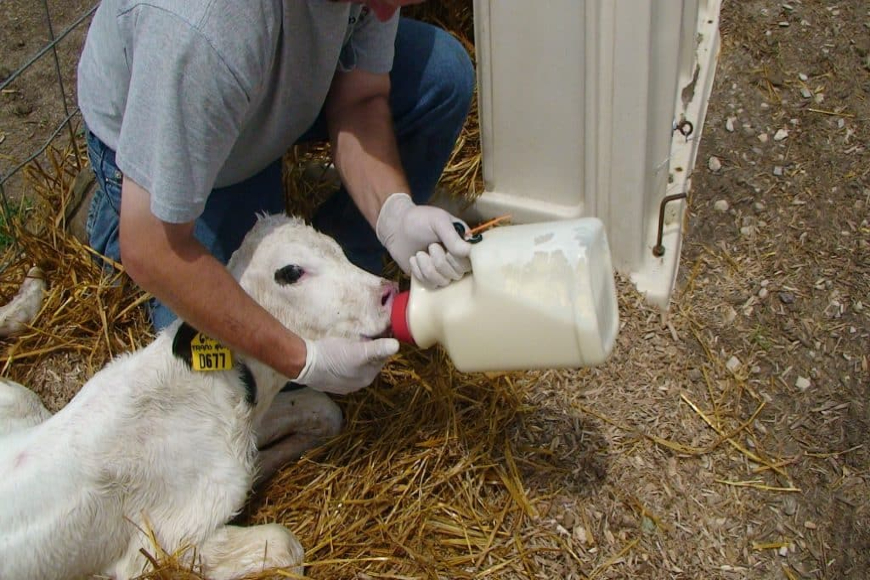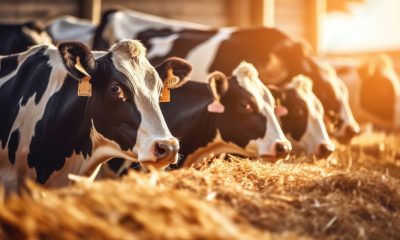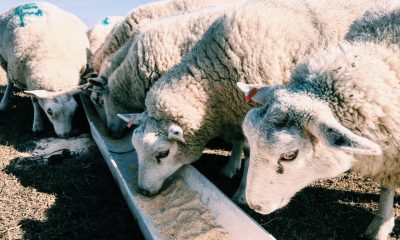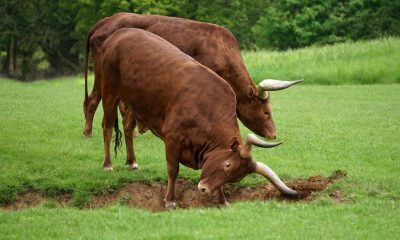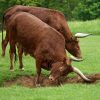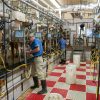In any dairy enterprise, newborn calves demand extreme care and individual attention. It is mainly because they are vulnerable at that point due to many factors. So, it is important to take good care of the newborn bovines since it is directly or indirectly linked to the quantity and quality of milk produced in the herd. The vulnerability of the calf is a hundred times greater during the first few hours after birth because at this point the calf has no antibodies in its body and doesn’t have any immunity. This is where the importance of colostrum starts.
What is colostrum?
Colostrum is simply the first milk produced after calving. It is generally thick and yellow and contains a large number of vitamins, nutrients, antibodies and many other nutrients with anti-microbial activity and growth factors. Essentially, it can be considered as a type of reinforced milk composed of vital nutrients and antibodies.
Why is it important?
As mentioned above the calves right after
birth is in a highly vulnerable state due to the lack of immunity. Colostrum
can give the calf adequate immunity in the form of immunoglobulins and other
antibodies. Since colostrum is a hundred times richer in these vitals, it
greatly helps the calf’s healthy growth and development. Colostrum is also rich
in amino acids, carbohydrates, fats, and water-soluble vitamins like vitamins
A, D, E, K and B.
Nutritional value of colostrum
High protein contentColostrum has more protein content than regular milk due to the presence of high levels of casein and immunoglobulins. Studies have proven that colostrums contain about 15% of protein content while it is 3% for regular milk. Some of the most important protein compounds in colostrums include Lactoferrins which provide immunity against diseases caused by viruses and bacteria.
1.Abundant Growth factors
Colostrum also includes growth factors that stimulate growth, some major constituents among them are insulin-like growth factors one and two. Growth factors like epidermal growth factors, platelet-derived growth factors and transforming growth factors are also present which help in cell division and differentiation and promote growth at the tissue level. These growth factors also help in the development of the gastrointestinal tract and make it impermeable to viruses, bacteria and other pathogens present.
2. Carbohydrate content
Even though the amount of the main carbohydrate lactose found in regular milk is low in colostrums when compared, it is rich in dietary oligosaccharides which are known to have many bioactive properties. They also play an important role in gut health and act as prebiotics while protecting against pathogens in the newborn’s gut.
3. Fat and lipid content
Colostrum consists of both saturated and unsaturated fatty acids. Among them, some fatty acids like butyric acid are bioactive and act as a modulator in gene function. Other saturated fatty acids like caprylic acid and lauric acid are known to have many anti-viral properties. Unsaturated fatty acids like oleic acid are also known to prevent parasite infections in the newborn’s body.
4. High vitamin content
Vitamins are proven to improve the immunity of all kinds of cells. Colostrum is rich in many fat-soluble and water-soluble vitamins. Water soluble vitamin like vitamin B is essential for the growth and production of hormones. Fat-soluble vitamins like vitamin A also help by providing immunity, growth and development. Similarly, vitamin D carries out immune-regulating activities while vitamin E prevents the cells from degradation.
5. Minerals and ash
Studies have shown that colostrums contain a higher concentration of minerals than regular milk. It contains a large amount of calcium, phosphorous, and considerable quantities of magnesium, zinc, and selenium. Since calcium plays an integral part in bone and teeth development and phosphorous is vital in the calves’ metabolic activities, colostrum plays an important role in the supply of these minerals.
All these nutrient factors of the
colostrum help the calves in the following ways:
Other anti-microbial factors of
colostrum
Colostrum has several anti-microbial
factors which help provide passive immunity to the calf and help them fight
infections. These anti-microbial factors of the colostrum are mainly due to the
presence of immunoglobulins.
Financial benefits of colostrum
Good management and feeding of
colostrum can bring about some financial benefits too.
Studies have shown that calves with
higher immunity show a better weight gain in a given period than a calf with
low immunity. Also, the high immunity in calves is connected with a better feed
conversion ratio. This means that the calves can utilize the maximum from a
given amount of feed. Considering the feed cost in today’s market provides a
great financial benefit. Recent studies also say that the mortality rate for
calves with high immunity is around 8% while it goes up to 20% for those with
low immunity. Since immunity in calves is directly connected with colostrum
intake, one cannot argue about the financial benefits of colostrum.
Things to remember
The importance of colostrum is also
dependent on the timeline of birth. The newborn calves generally require about
five per cent of their body weight in colostrum during the first four hours (
ideally within 30 minutes) after calving and about one litre of colostrum in
the first twelve hours and then in 24 hours. This is very important while
feeding colostrums because during the first 24 hours after birth, the
intestines of the newborn calf can accept the antibodies, supply them directly
into the blood, and help fight against infections. This is not possible after
that.
The most efficient way to feed
colostrums is to let the calf suck the dam after birth. In some cases, this
might not be possible because of the calf’s poor health or the dam’s condition.
In such situations, colostrums can be collected by milking the cow right after
birth and can be manually fed to the calf.
Another important thing to note is
while collecting the colostrum make sure it is of good quality. Cows in their
third lactation or above generally produce good quality colostrums. The quality
of colostrum can be confirmed by its thick creamy and yellowish appearance.
